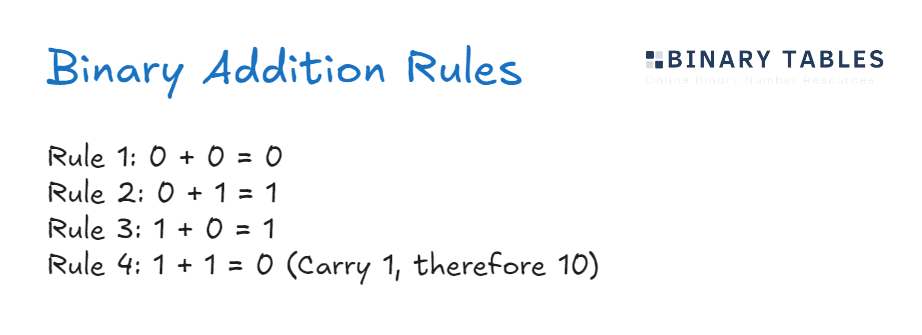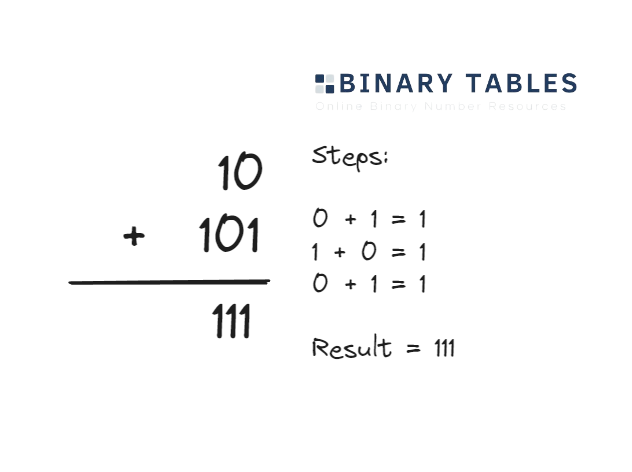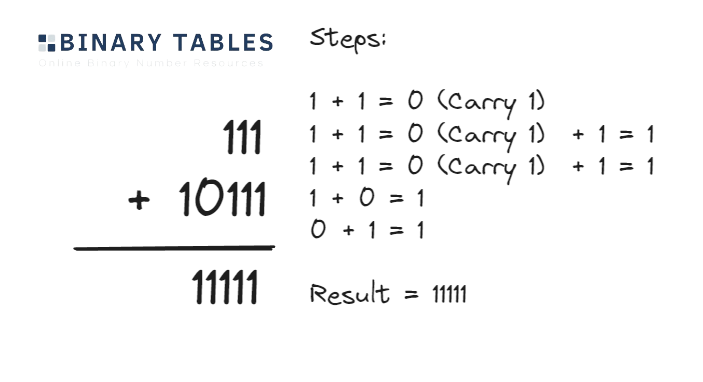Addition is a vital skill when adding binary numbers. Addition forms the base of all mathematics operations in computer systems. Therefore it is vital to learn how to add binary numbers together. The good news is that if you know how to add decimal numbers together then binary addition should be a breeze.
There are a few rules to remember when learning to add binary. As we only have two digits we can summarise this into four rules:

You can try this in the above binary addition calculator to confirm these rules are correct.
The best way to learn how to complete binary addition is through some worked examples. Follow along with our two worked examples below.
In the below example we add 2 (10) and 5 (101) together in binary. This is an easy example as it does not include any carries.

In the below example we add 7 (111) and 23 (10111) together in binary. This is a harder example as it includes having to use carries.

| A | B | A + B | Carry |
|---|---|---|---|
| 0 | 0 | 0 | 0 |
| 0 | 1 | 1 | 0 |
| 1 | 0 | 1 | 0 |
| 1 | 1 | 0 | 1 |
| 10 | 0 | 10 | 0 |
| 10 | 1 | 11 | 0 |
| 11 | 0 | 11 | 0 |
| 11 | 1 | 100 | 1 |
| 100 | 0 | 100 | 0 |
| 100 | 1 | 101 | 0 |
| 101 | 0 | 101 | 0 |
| 101 | 1 | 110 | 0 |
| 110 | 0 | 110 | 0 |
| 110 | 1 | 111 | 0 |
| 111 | 0 | 111 | 0 |
| 111 | 1 | 1000 | 1 |